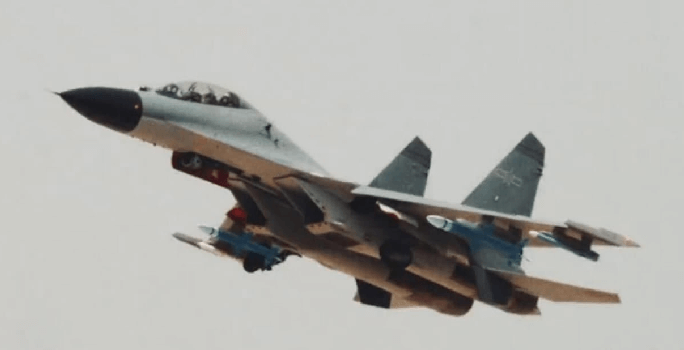The Chinese PLAAF is making rapid improvisation of the J-11B Flanker as the new variant of the fighter jet enters batch production at Shenyang Aircraft Corporation (SAC) facilities.
Who Is Zhao Zongqi & Why Is India Celebrating The Exit Of Chinese PLA Commander?
The improved variant of J-11B is an upgrade of the existing J-11 Flankers in the service. While the details of the improvisations remain classified, experts suggest it could be the integration of an advanced active electronically scanned array (AESA) radar, replacing the previous pulse-doppler version.
The new aircraft completed all flight tests and missions in scientific research required for batch production on December 18, according to the state-owned Aviation Industry Corporation of China (AVIC).
However, the J-11 aircraft has had a troubled history in China. Beijing allegedly violated coproduction agreements inked with Moscow, leading to the suspension of production of the second batch on “indigenously manufactured and legally licensed” J-11A/Su-27SK.

The experience gained from the J-11 prompted Beijing to press further with the development of an improvised and more domesticated version known as the J-11B, which incorporates Chinese avionics (rather than Russian ones) to reduce the dependency on Moscow.
Chinese subsystems on the J-11B include Type 1474 radar, 3-axis data system, power supply system, emergency power unit, brake system, hydraulic system, fuel system, environment control system, molecular sieve oxygen generation systems, digital flight control system, and glass cockpit.
The IRST is a Chinese copy of the Russian OEPS-27 electro-optic search and tracking system, and the airframe is slightly lighter due to the greater use of composites. It can also carry more advanced weaponry, including PL-12 and PL-15.
Generally, the J-11Bs in service have been spotted with black radar domes, but the new ones sported white domes- which suggest that it is very likely to be equipped with a novel radar system.
“Some of the photos of the new J-11B variant show that the aircraft still has a pitot tube on the center front of its radar dome, and usually the pitot tube has compatibility issues with an AESA radar, so if the aircraft is indeed equipped with an AESA radar remains to be determined,” Fu Qianshao, a Chinese military aviation expert, told the Global Times.
“It could be a significantly improved pulse-Doppler radar or a passive electronically scanned array (PESA) radar. The possibility for an AESA radar should also not be fully ruled out,” Fu added.
Follow EurAsian Times on Google